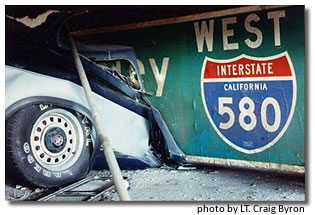Major natural disasters strike the United States every year causing deaths and injuries to our citizens and billions of dollars in damage to property and infrastructure. Wildfires, floods, and earthquakes are some of the most common natural disasters we face. We know the Bay Area may suffer the effects of a major disaster in the coming years, so preparing now for whatever may come is the surest means of reducing the risks we all face.
Alameda County Local Hazard Mitigation Plan
The rebuilding and recovery efforts following a disaster can last for many years, sapping the vitality out of local economies by diverting resources from other public and private endeavors. Disasters also have significant impacts on landfills and the environment, as debris is generated and enormous amounts of energy and natural resources are required to rebuild. This in turn stretches our landfills to their limits.

Given the trend towards ever-increasing impacts of natural and human-induced disasters, experts in both the public and private sectors began promoting the concept of pre-disaster mitigation planning. Defined as "sustained activities to reduce or eliminate long-term risk to people and property from hazards and their effects", the purpose of mitigation planning is to reduce the potential loss of life, property damage, and environmental degradation from natural disasters as well as minimize the time and cost of response and recovery.
In light of these developments, the Disaster Mitigation Act of 2000 (Public Law 106-390) was signed into law by President Clinton in October of 2000. It reinforces the importance of mitigation activities at the state and local government levels and emphasizes planning for disasters before they occur. As such, DMA 2000 enshrines pre-disaster hazard mitigation planning as its central core idea and has requirements for national post-disaster mitigation programs as well. The Act requires all state and local governments to develop a plan based on FEMA guidelines. Key components of a mitigation plan include hazard identification, asset inventory, risk analysis, loss estimation, and a plan to reduce the effects the identified hazards will have. In addition, these plans must be updated periodically with public input.
The following information and links show how Alameda County is working with the Association of Bay Area Governments (ABAG) and other local jurisdictions to update the current plan via ABAG's Multi-Jurisdictional Local Hazard Mitigation Plan (MJ-LHMP) for the Bay Area.
Public input for Alameda County's plan Annex is encouraged. As such, citizens are encouraged to review the documents herein and provide their comments and suggestions. To view the County's 2010 Draft Annex and the mitigation strategy priorities we are considering, follow this link:
